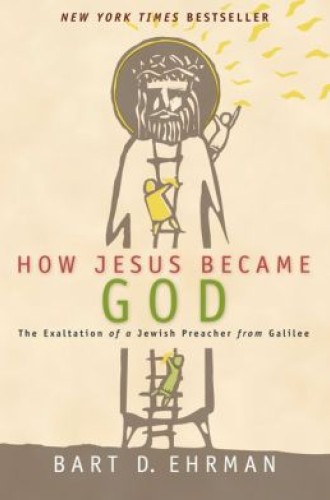Lord and God
Through his words and actions, Jesus of Nazareth excited expectations that he was (or would be) the Messiah. That Jesus inspired this hope likely led the Roman authorities to crucify him. Jesus didn’t actually claim divinity for himself, and he wasn’t worshiped as such during his earthly ministry. The ascription of divine status to Jesus and the accompanying devotional practices that are reflected in the New Testament arose only after—though astonishingly soon after—Jesus’ crucifixion. Key to this development were experiences (“visions”) of the resurrected Jesus, which generated in the earliest circles of Jewish believers the conviction that God had raised Jesus (bodily) from death and exalted him to a unique heavenly status and glory. Further developments in christological belief over the ensuing decades and centuries led to the classic doctrine of the Trinity.
That, in a nutshell, is the thrust of Bart Ehrman’s book. To anyone familiar with a historical approach to the topic, these will not be novel conclusions. Indeed, they have been affirmed by a significant number of New Testament scholars, especially over the past several decades. That an astonishing “high Christology” erupted quite soon after Jesus’ crucifixion, and that the risen Jesus featured remarkably in the corporate devotional practices of earliest believers, has been increasingly recognized. As the great German New Testament scholar Martin Hengel observed about developments in the 20 years between Jesus’ execution and the earliest letters of Paul, “in essentials more happened in Christology within these few years than in the whole subsequent seven hundred years of church history.”
However, Ehrman’s book is intended for readers generally unacquainted with this scholarly work. Among those readers he obviously aims to have a dramatic impact. Many Christians unacquainted with the historical data will assume that beliefs about Jesus’ divine status derive from Jesus’ own claims, and many non-Christians will likewise assume that the validity of traditional Christian beliefs about Jesus depends upon whether Jesus actually made corresponding claims. For both kinds of readers, the “news” that Jesus didn’t actually make the sort of claims for himself that earliest believers made about him may seem somewhat sensational.





